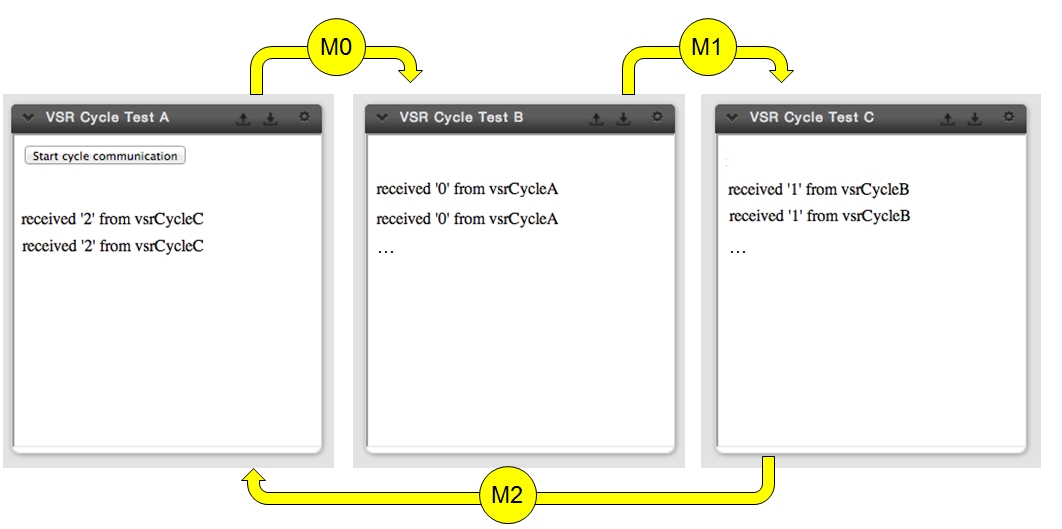
Implicit Inter-Widget Communication: Loops Detection Facilities
Authors: Alexey Tschudnowsky, Michael Hertel, Martin Gaedke
Introduction

The mashups utilizing PubSub-based inter-widget communication approach do not require users to establish connections between widgets explicitly. Communication, i. e. data and control flows emerge as soon as widgets are put together in a workspace (so called choreographed user interface mashups, cf. [1]). Technically, this is achieved by employing the event-driven approach via publish-subscribe messaging pattern (pub/sub): widgets autonomously subscribe and publish messages on different communication channels, so-called topics. A message bus running within a browser takes care of delivering messages to all interested parties, i. e., widgets subscribed to the corresponding topics.
In some situations, however, such messaging approach may lead to malfunctioning compositions, for example the ones producing infinite message transfer or self-reinforcing loops. This in turn can cause unexpected and undesirable effects or even a crash of the run-time environment. Such a loop-producing mashup could be, for example, a workspace containing the following 3 widgets:
- An emergency map widget M showing locations of emergency incidents in some city. The widget enables one to point a map to certain location and publishes details of all emergency incidents in the area (e.g. street name, incident description etc., topic “http://example.org/incidents”). The map is simultaneously subscribed to messages containing GPS coordinates which should act as a center position of the map (topic “http://example.org/gps”).
- A widget D showing a table overview of the emergency incidents (received over the topic “http://example.org/incidents”) and publishes immediately addresses of the nearest hospitals (“http://example.org/hospitals”).
- A widget H shows a table overview of hospitals (received over the topic “http://example.org/hospitals”) and publishes immediately GPS coordinates of the calculated center position of all hospitals (topic “http://example.org/gps”).
- IWC implementation guidelines (support developers in developing loop-preventing widgets)
- Static analysis of workspaces (support users in detection of potential loops before the communication starts)
- Runtime analysis of IWC traffic (support users in detection and recovery of loops as soon as they emerge)
Screencast
Further Readings
[1] Scott Wilson, Florian Daniel, Uwe Jugel and Stefano Soi. Orchestrated User Interface Mashups Using W3C Widgets. ICWE 2011 Workshops, June 2011, Springer, Pages 49–61.
[2] The OMELETTE Project (FP7/2010-2013 GA n 257635). D2.3 - Final specification of Mashup description language and Telco mashup architecture. Public deliverable, 2013.

